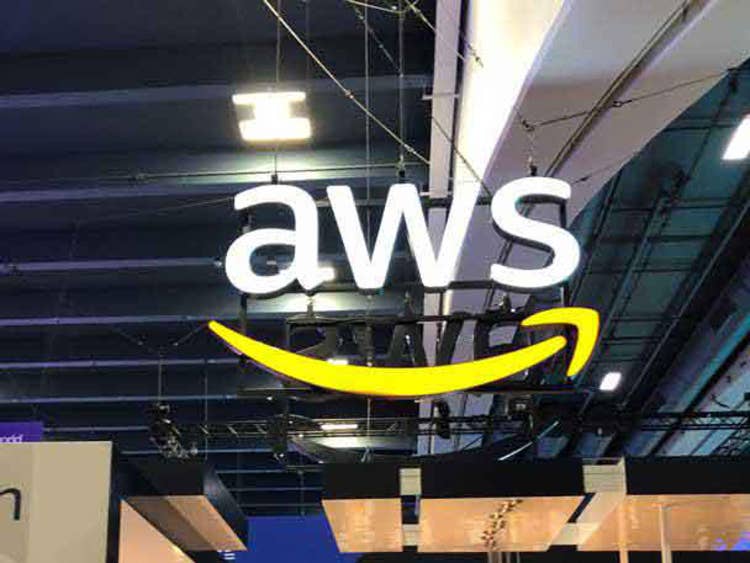AWS Maintains Lead As Q2 Enterprise Cloud Spending Tops $40B: Synergy Research
‘Some of the other cloud providers are growing at very healthy rates, but Amazon is proving to be an extremely tough competitor,’ Synergy Research Group Chief Analyst John Dinsdale writes in a new report.

Enterprise spending on cloud infrastructure services continued to grow in the second quarter, rising about 6 percent to reach $42 billion compared to the prior quarter, according to a report from Synergy Research Group.
Market share among the top cloud providers looked largely the same as in past quarters, according to Synergy, with Amazon Web Services still the clear leader.
Compared to cloud sales of about $30 billion during the same period the year before, cloud sales grew 39 percent during the second quarter, according to the Reno, Nev.-based researcher.
That marked the fourth quarter in a row where the year-over-year growth rate increased from the previous quarter, “which is unusual for such a large, high-growth market,” Synergy Research said in its news release. Year-over-year growth had come in at 37 percent for the market during Q1 and 35 percent during the fourth quarter of 2020.
Synergy estimates that trailing 12-month sales reached $152 billion. Public infrastructure- and platform-as-a-service accounted for most of the sales.
[RELATED: Cloud Services Reach $130B, Dwarfs Data Center Spending]
Cloud sales were about $23 billion in the second quarter of 2019 and about $16 billion for the same period the year prior.
AWS led the pack again in the second quarter with 33 percent market share, followed by Microsoft with 20 percent share. Google placed third with 10 percent. Amazon on Thursday said its AWS cloud computing division saw a 37 percent growth in sales to $14.8 billion in its most recent quarter.
Smaller players included Alibaba (6 percent), IBM (4 percent), Salesforce (3 percent), Tencent (2 percent) and Oracle (2 percent), according to Synergy.
Fujitsu, NTT, Rackspace and SAP are among the companies with a market share of 1 percent or less.
Amazon achieved 10 percent quarter-over-quarter growth, above the overall market’s 7 percent quarter-over-quarter growth, according to the report.
Amazon held about 33 percent market share in the second quarters of 2019 and 2020. Microsoft held 18 percent market share in the second quarter of 2020 and 16 percent market share the year prior. Google held 9 percent share in the second quarter of 2020 and 8 percent the year prior.
“Some of the other cloud providers are growing at very healthy rates, but Amazon is proving to be an extremely tough competitor,” Synergy Chief Analyst John Dinsdale wrote in the report.
Dinsdale said that even accounting for a weakened dollar against other currencies over the last year, “these growth rates speak volumes about the underlying strength of the cloud market and its future growth opportunities.”
“There remains a wealth of opportunity for smaller, more focused cloud providers, but it can be hard to look away from the eye-popping numbers coming out of the big three,” he said.
Chris Whaley, executive vice president of cloud solutions and sales at Seattle-based 2nd Watch — a member of CRN’s Elite 150 whose vendor partners include AWS, Microsoft and Google — told CRN in an interview that large enterprises seeking multiple cloud environments has helped grow the overall cloud market. He estimated that about 30 percent of the company’s engagements are for multi-cloud compared to less than 10 percent two years ago.
In April, a report from Flexera that surveyed 750 global cloud decision-makers and users in October and November 2020 said that about 40 percent of all participating organizations regardless of size use multi-cloud management tools. They reported use on average of 2.6 public clouds and 2.7 private clouds while experimenting with an additional 1.1 public clouds and an additional 2.2 private clouds.
“I would pay attention to things like SAP and GCP’s partnership,” Whaley said, referring to Google Cloud becoming a ‘RISE With SAP’ strategic cloud partner. “Providers are going to get more strategic. We’ll see more lean in and developing more strategic partnerships. The partnership ecosystem is becoming more important.”
Pavel Pragin, CEO at San Francisco-based AWS partner ClearScale, told CRN in an interview that some existing Microsoft customers are still choosing Microsoft over AWS. But what’s winning AWS new contracts is a long-term bet that AWS will stick around and continue to invest in the best products and services.
He predicts even more cloud investment from enterprises this year across the vendors due to a resistance to spending money during the uncertainty of the pandemic. “For almost two years, people were sitting on projects,” Pragin said. “They have a lot of pent-up demand. Huge growth in the pipeline.”
He said AWS, like all cloud vendors, needs to remember the importance of their partner programs during a time of high growth.
“As they scale and grow, it’s harder for them to service so many customers,” he said. “We’re so early on in cloud in the enterprise world. They need partners to execute.”